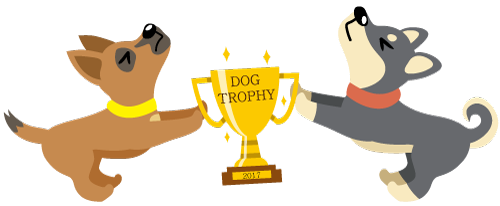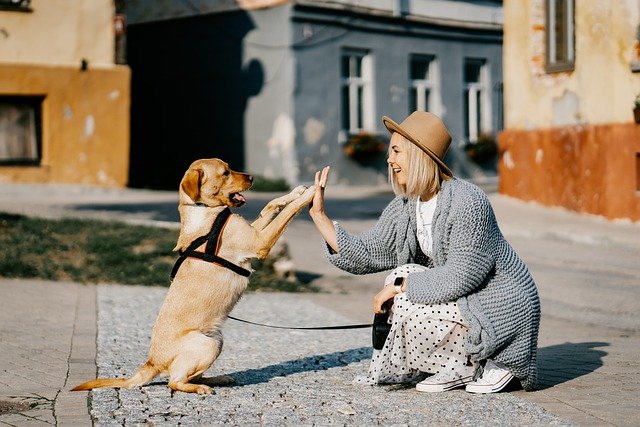There is no way to understand why other dogs in the park react to your tame and sweet pet quite hostilely. You are probably not the only one to whom this happens, and the reason lies in – body language. Linguistic misunderstandings are not uncommon among people either, and we are all very aware of that, and then why would it be different when it comes to dogs.
Therefore, it is probably the explanation when it comes to your misunderstood dog. If you have a bulldog as an example, he looks a lot with his appearance, even when he “doesn’t speak”. Wrinkled skin, short or lowered tail, strong body, and all that give the impression of domination and tension even when it is completely relaxed. The peaceful impression is not helped by the incredibly short snout, due to which the dog shows its clenched teeth all the time and without its will, and all that is accompanied by a heavy, lowered, and often bloodshot look.
It may be a little easier for you to understand now how your pet can affect chihuahuas, terriers, pugs, and so on. With these dogs, your dog’s body, gait, and gaze can give a hostile and threatening impression despite the best intentions he has. Even though he just wants to join the fun in the park, in the eyes of other dogs – he is a threat.
The equivalent of this dog body language in our case would be to run into a cafe with a fist clenched into a fist and a middle finger raised. Even if unintentionally, with such a gesture, we would certainly not send a well-intentioned message, and it is difficult for someone to offer us a drink. And while man is able to explain the misunderstanding with words, dogs are not able to do so, so their body language is interpreted as basic and the only one among the members of their species. Not understanding the language (body language) of another dog can so often lead to serious trouble. And the culprit, as in many things, is a man this time as well.
And, as in many cases, man has learned a lot of dog communication that does not exist in reality. So is the idea that all dogs speak the same language. That, of course, is not the case.
This does not mean, of course, that different races do not understand each other at all – far from it – but due to a number of physical characteristics, misunderstandings can often occur. Large races certainly “speak” a different language than small ones. And there can be various noises. After all, you notice that Pekingese often “shout” in the street, while you will almost never hear it when it comes to Dobermans or German Shepherds.
Genetic predisposition
The influence of genetics is visible through the physical characteristics of the dog that we talked about, on which their behaviour directly depends, and some specifics or limitations in communication. For example, a dog would not be able to look another directly in the eye if he did not have the type of eye that allows him to do so. Similarly, a submissive facial expression is not possible without the muscles that make it possible. As a breed, domestic dogs have, to say the least, an unusually wide range of physical characteristics and differences. Especially when it comes to size. Shih T is between 20 and 28 centimeters tall and weighs 4 to 6 kilograms.
On the other side of the spectrum, we find the Irish Wolfhound, which is between 71 and 94 centimeters in height at the shoulders and weighs about 61 kilograms. Not to mention the variations in colour, length, texture, and pattern of fur. The muzzle is sometimes shortened as in Pekingese, bulldogs or pugs, or lengthened as in Afghan hounds, whips and so on. The long and slender legs give the Persian Greyhound an excellent predisposition to hunt using its sight, while the short legs of the basset hound point to the ground and give it an advantage in tracking prey based on smell.
The physical attributes of a particular breed are closely related to the original purpose and thus affect the behaviour that a dog needs to perform the function assigned to it by man. Physical differences in appearance also affect a dog’s ability to communicate, both with humans and with other dogs. Visually, the dog uses body position, facial expression, ear position, eye contact, and tail movements to “talk”, but certain species have specifics that can interfere with them or prevent them from sending or receiving some signals.
Ears positioned low on the head or hanging like a spaniel change facial expression and such dogs cannot hear the ears. The thick fur of an orange or Samoyed can affect a dog’s ability to signal something with its body, and long hair on the face like the “bangs” of an Old English Shepherd prevents him from using eye contact, but it also bothers him to show his teeth or “scratch”. Many curly dogs like poodles and airedale terriers have a similar problem.
The large folds of skin on a face like a Shar Pei together with their very small ears pointing forward diminish their ability to communicate with facial expressions, the position of the ears, and eye contact.
Attributes of a wolf
The breeds that have the clearest body language are the ones that most resemble wolves, like the German Shepherds. We have already talked in previous issues about the fact that man, through selective upbringing, has made many races today almost incomprehensible to their distant ancestors – wolves. It turned out that most wolf signals are understood by huskies (all fifteen ways of communication that were examined), while the cavalier dog of King Charles is able to understand only two ways in which chickens send a message.
Who understands people better?
Differences between breeds exist not only in communication with other dogs but also in contact with humans. Races that were raised to work with visual contact with humans understand the gesture of showing far better than races that performed their tasks without direct supervision.
It turns out that hunting dogs or shepherds understand much better what it means when a person points a finger than it does with guards, dogs bred for hunting in pits, or those whose role has been to pull sleds for hundreds of years. They also outperformed mixed breeds in these tests. In addition, breeds with short muzzles and centrally placed eyes interpreted gestures better than those with long muzzles and wide-set eyes, which is probably related to better eye position and the ability to focus attention.
In the end, it should be said that man is not to blame for all the differences and misunderstandings between the races. Many dogs have naturally developed traits that distinguish them from other members of their species. For example, we have read through races whose members bark very little or not at all. These are the most ancient breeds, genetically close to wolves, such as basins or huskies. They generally sound like their ancestors and in communication, they rely much more on body language than on “verbal” signs.





